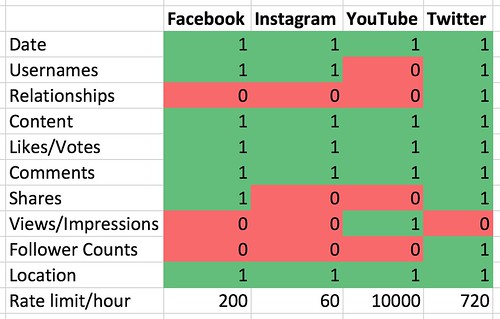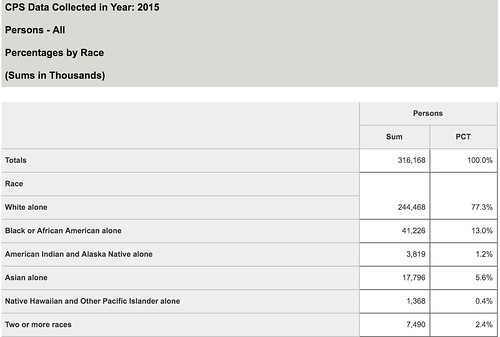One of the recurring questions people asked yesterday about my post on influence was why agencies and marketers focus so much on Twitter, when other channels like Instagram, YouTube, and Facebook are equally, if not more impactful. The answer comes down to data. We manage what we can measure, and we give preference to what we can manage most easily. Twitter provides more usable data on a per-post basis.
What are the kinds of data we care about as marketers? At a post level, meaning on any individual piece of content, we care about:
- Dates things happened, to measure over time
- Usernames, to know who we’re examining
- Relationships, to learn who talks to who
- Content, to know what our audiences said
- Likes/Votes, to discover what’s popular
- Comments, to know what our audiences said to us
- Shares, to judge how worthwhile the content is
- Views, to uncover our reach
- Follower counts, to uncover our potential reach
- Location, to discover where our audience is
We also care, as marketing technologists, how much data a social network will give us over time. How fast can we receive our data?
Look over this chart of post-level data. What do we get from each network?
We see that Twitter provides us the most data at a per-post level. Facebook appears to come a close second, except that Facebook’s data is limited to Pages for the most part; we can see Page post content, but not individual content. On Twitter, we can see both. Instagram comes in third, and YouTube comes in fourth.
We can’t manage what we can’t measure. We can measure Twitter especially well, even if it’s not the most robust or popular social network. The tools of the trade focus on Twitter because they can generate more measurement and analysis from the data – and that means an easier sale to companies and agencies.
Does this bias create distortions in our ability to identify influencers? Yes. Tom Webster, VP of Strategy at Edison Research, often points out that social media tools’ bias towards Twitter means bias in their reporting, especially of politics. Twitter is very bad, for example, at predicting election outcomes. Why? Twitter’s demographics are far from representative of the population as a whole according to Pew Research:
For example we see black and Hispanic users outnumber, as a percentage, white users, when we look at the Census Bureau’s data:
Twitter’s predictive power for elections is very poor because of the bias in its user base. Thus, when we examine influence, Twitter may or may not be the best choice, depending on what biases influence our influencers.
Should we, as marketers, examine more than one channel? Yes, if resources permit. The more data we can gather from every social network, the more complete and representative a picture we can paint, and the better our influence identification will be. Twitter will likely remain our bias until the other networks provide comparable quality of data, so we must account for its biases when we work with its data.
You might also enjoy:
- Almost Timely News, February 11, 2024: How To Evaluate a Generative AI System
- Almost Timely News, January 7, 2024: Should You Buy a Custom GPT?
- Almost Timely News: Principles-Based Prompt Engineering (2024-02-25)
- Mind Readings: You Need Passwords for Life in the Age of Generative AI Fraud
- Almost Timely News, Febuary 18, 2024: From Comment to Content
Want to read more like this from Christopher Penn? Get updates here:
 Take my Generative AI for Marketers course! |





Leave a Reply